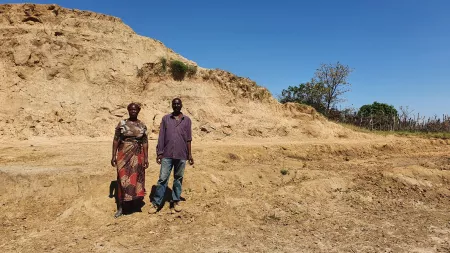The Hague, Netherlands — Adapting to climate change will cost developing countries up to an estimated US$387 billion/year, according to a new report.
UNEP’s Adaptation Gap Report 2023 (AGR23) paints a stark picture of the ever-increasing climate adaptation costs for developing countries with the poorest and most at-risk countries facing an alarming adaptation finance gap. The adaptation finance gap is the difference between the cost of adapting to climate change and the currently available international public adaptation finance.
According to the report, the estimated costs of adaptation for developing countries could range from US$215 billion/year to US$387 billion/year for the period up to 2030, which is a significant increase compared to previous estimates; whereas these countries just received USD 21 billion in international support for adaptation. As a result, the adaptation finance gap has significantly widened with the estimated costs of adaptation now ten (10) to eighteen (18) times greater than international public adaptation finance flows.
Within the diverse group of so-called developing countries, lower-income countries require a larger relative proportion of their economies for adaptation finance compared to higher-income countries. Despite facing severe impacts of climate change, these countries have limited domestic means to address their huge adaptation needs adequately.
Obed Koringo, Climate Policy Advisor for CARE (based in Kenya) said: “It is deeply concerning that despite ever-increasing adaptation needs in at-risk developing countries, adaptation continues to receive even less finance with funding from developed countries and multilateral agencies still skewed in favor of mitigation.
“The new figures from the AGR23 are a stark reminder that enhanced action on adaptation is an urgent priority and developed countries must live up to their promises by rapidly scaling up predictable, new and additional adaptation finance.
“This finance is urgently needed to slow down the accelerating climate impacts, which would otherwise further widen the adaptation gap in developing countries. We call on those implementing adaptation actions to prioritize locally-led solutions that promote the crucial involvement and leadership of women and girls.”
The new report resonates with CARE’s 2023 Hollow Commitments report, which highlighted that there is no chance of achieving 50/50 balanced financial support for climate mitigation and adaptation in the near future, according to the analysis conducted on the latest climate finance plans submitted to the UNFCCC by 26 wealthy countries.
Despite wealthy countries recognizing this urgency and agreeing to double adaptation finance commitments by 2025 at COP26 in Glasgow, 16 of the 26 finance submissions assessed by CARE did not feature firm financial pledges for adaptation, only weak, qualitative statements in support of financial balance, or in some cases nothing at all.
John Nordbo, Climate Finance Specialist at CARE said: “As countries plan to meet during COP28 in the United Arab Emirates later this month, the stakes are extremely high, especially on the delivery of past commitments and pledges on adaptation finance.
"All wealthy countries must redouble their efforts to plan their future climate support, which should be anchored in the New Collective Quantified Goal on Climate Finance. This will ensure predictability and that the most vulnerable countries and people are prioritized.
“They also need to produce a clear roadmap detailing how they will deliver on their COP26 undertaking to at least double adaptation finance by 2025, as a step towards achieving the long-promised balance between mitigation and adaptation finance.”
For media inquiries, please contact Iolanda Jaquemet, Senior Humanitarian Communications Coordinator, CARE International via: [email protected].
